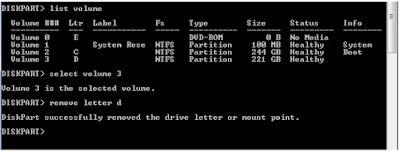Windows,Linux And Networks
Wednesday, 23 September 2015
How To Configure Yum Server:YUM-Yellowdog Updater ...
How To Configure Yum Server:YUM-Yellowdog Updater ...: How To Configure Yum Server: YUM-Yellowdog Updater Modified *Yum is RPM(Redhat Package Manager)that is able to query for information ab...
Friday, 18 September 2015
How To Configure Yum Server:
YUM-Yellowdog Updater Modified*Yum is RPM(Redhat Package Manager)that is able to query for information about
i)available packages ,
ii)fetch packages from repositories,
iii)install and uninstall them.
*You must have superuser privileges in order to use Yum to install, update or remove packages on your system.
*Packages for repository server are:
i)delta.rpm
ii)Python-delta.rpm
iii)create.repo
Commands:
To check whether yum is configured or not.
#yum repolist all.
To configure yum server you need to copy packages of your RHEL anywhere in the "/".
#cp -ra /media/OS Cd Path/* /var/ftp/pub/yum
"*" Denotes everything that to be copied
"/var/ftp/pub/yum" is the directory where i will copy my packages.
You can check your Copy Status by opening a new terminal and going to the particular directory where your yum is being copied.
#du -sh
After completion of copying ,travel to the path given below to create a repo file .
#cd /yum/yum.repos.d/
repos.d is a repository.
you will find some repo files, do not delete them .and create a new repo file bby below command.
#vim abc.repo
you can use any editor to create a file either vim or vi.
After you enter into that file use insert tool by pressing "I", and start typing as below.
[abc]
name=abc
baseurl=file:///var/ftp/pub/yum
gpgcheck=0
:wq(save & quit)
Comments:[abc] it can be anyname.
baseurl its your yum path where your packages are kept.
gpgcheck is key based authentication.
0= if it is not registered with RHN.
1= if it is registered with RHN.
RHN=Redhat Network.
After completing save and quit. run the below commands.
#yum clean all
#yum update all
#yum list all or yum repolist all
yum repolist all will display your repo file with enabled comment.
easiest way to confirm that your yum is running properly.
#yum list all -- you will find all your packages will be listed in Black color texts.
Done.
Sunday, 9 August 2015
**How to Hide a Drive Using Command Prompt:
Goto command prompt
-->Type "DISKPART" (#-It will open in newWindow)
-->Type "list volume" (#-It will list the volumes in
the computer).
drive which you want to hide)
-->Type "Remove letter d" (# D is the drive letter of the
Volume which you have selected).
-->Now check your computer drive is not available.
-->Type "Assign letter d" (# if you want to unhide the drive).
-->DONE .
Friday, 24 April 2015
Configuring Network With RIP Protocol: Using Cisco Packet Tracer.
Configuring Network With RIP Protocol: Using Cisco Packet Tracer.
Requirements:2 Routers
2 Switches
Min 1 System on Each Network
1st Network IP: 192.168.10.1<--Fast Ethernet
2nd Network IP:192.168.20.1<--Fast Ethernet
Serial IP:192.168.30.1 & 192.168.30.2
Router 1-
Router> Enable
Router#Configure Terminal
Router(Config)#interface fastethernet 0/0
Router(Config-if)#ip address 192.168.10.1 255.255.255.0
Router(Config-if)#no shutdown
Router(Config-if)#end
Router#wr
Router#Configure Terminal
Router(Config)#interface serial 0/0
Router(Config-if)# ip address 192.168.30.1 255.255.255.0
Router(Config-if)#clock rate 64000
Router(Config-if)no Shutdown
Router(Config-if)#End
Router# wr.
Router 2-
Router> Enable
Router#Configure Terminal
Router(Config)#interface fastethernet 0/0
Router(Config-if)#ip address 192.168.20.1 255.255.255.0
Router(Config-if)#no shutdown
Router(Config-if)#end
Router#wr
Router#Configure Terminal
Router(Config)#interface serial 0/0
Router(Config-if)# ip address 192.168.30.2 255.255.255.0
Router(Config-if)#clock rate 64000
Router(Config-if)no Shutdown
Router(Config-if)#End
Router# wr.
Configure The Systems of each network by assigning ip address of the same series.
Configuring Protocol: RIP on th above network.
Router1:
Router#Config Router rip
Router(Config-router)#network 192.168.10.0
Router(Config-router)#network 192.168.30.0
Router(Config-router)#no autosummary
Router(Config-router)#end
Router#wr.
Router2:
Router#Config Router rip
Router(Config-router)#network 192.168.20.0
Router(Config-router)#network 192.168.30.0
Router(Config-router)#no autosummary
Router(Config-router)#end
Router#wr.
Try to send the packets (or ping )over the network.
Friday, 3 April 2015
BLOCK A WEBSITE FOR A SPECIFIC COMPUTER
GOTO COMPUTER
-> C :DRIVE
--> WINDOWS
--> SYSTEM32
--> DRIVERS
--> ETC
--> HOSTS (OPEN THROUGH NOTEPAD)
--> save the file.
--> verify using your browser ""facebook.com" is blocked.
-->DONE.
Comment:--- 127.0.0.1--It is a local loopback address of your computer.
-->If you want to access again .remove the last line which you have written in hosts file.
Subscribe to:
Posts (Atom)






